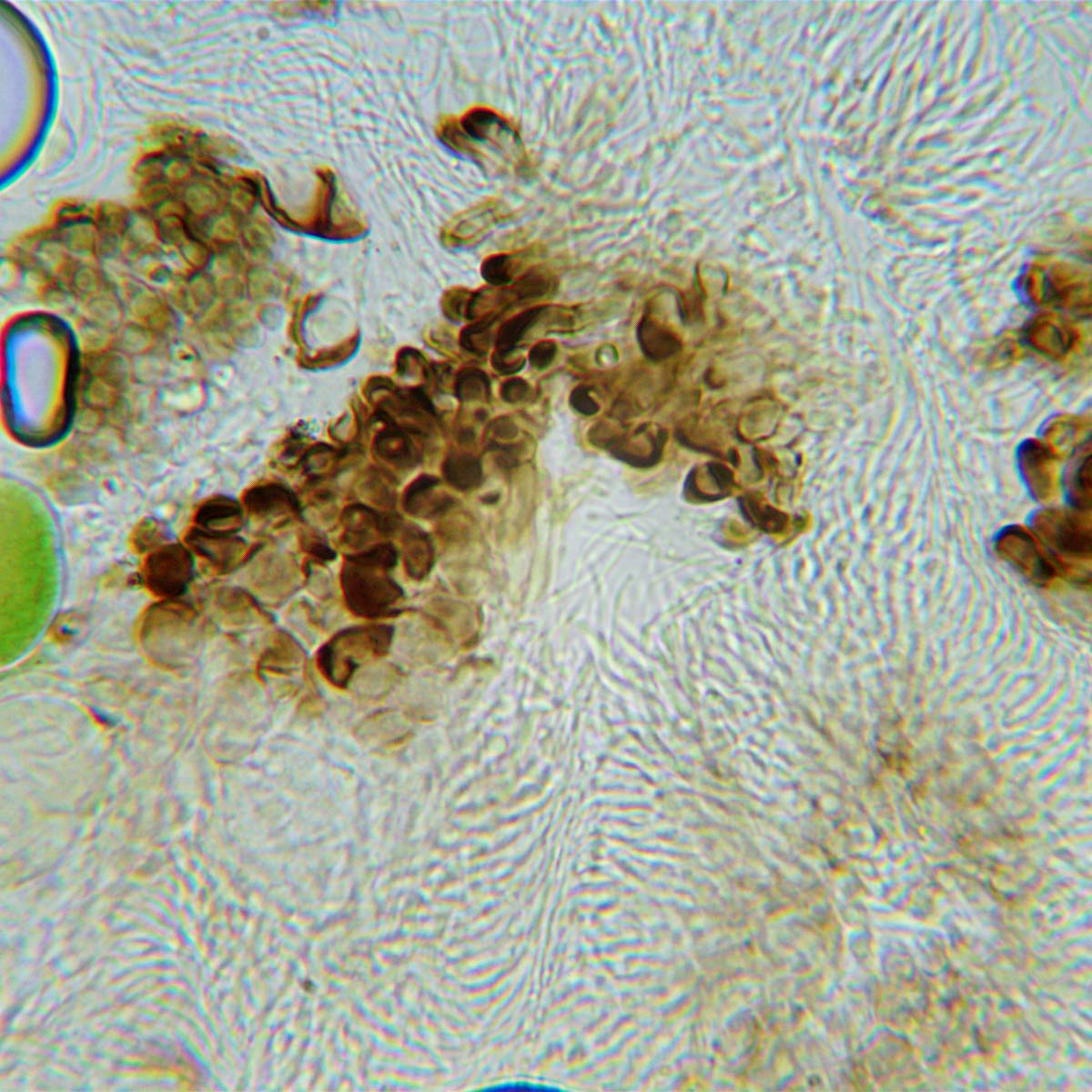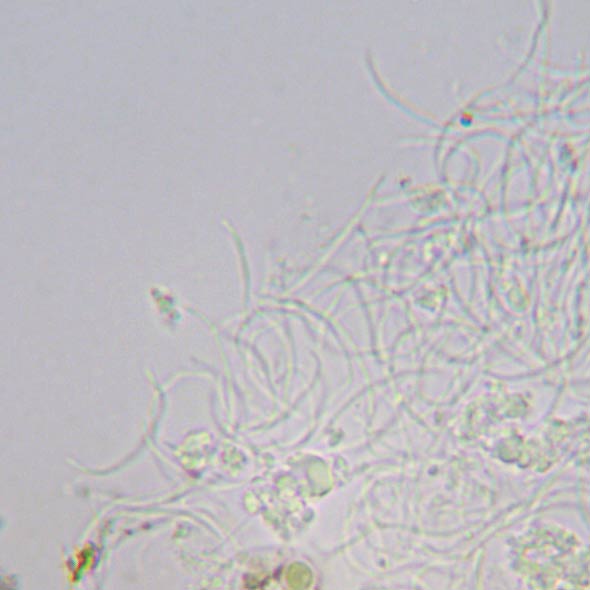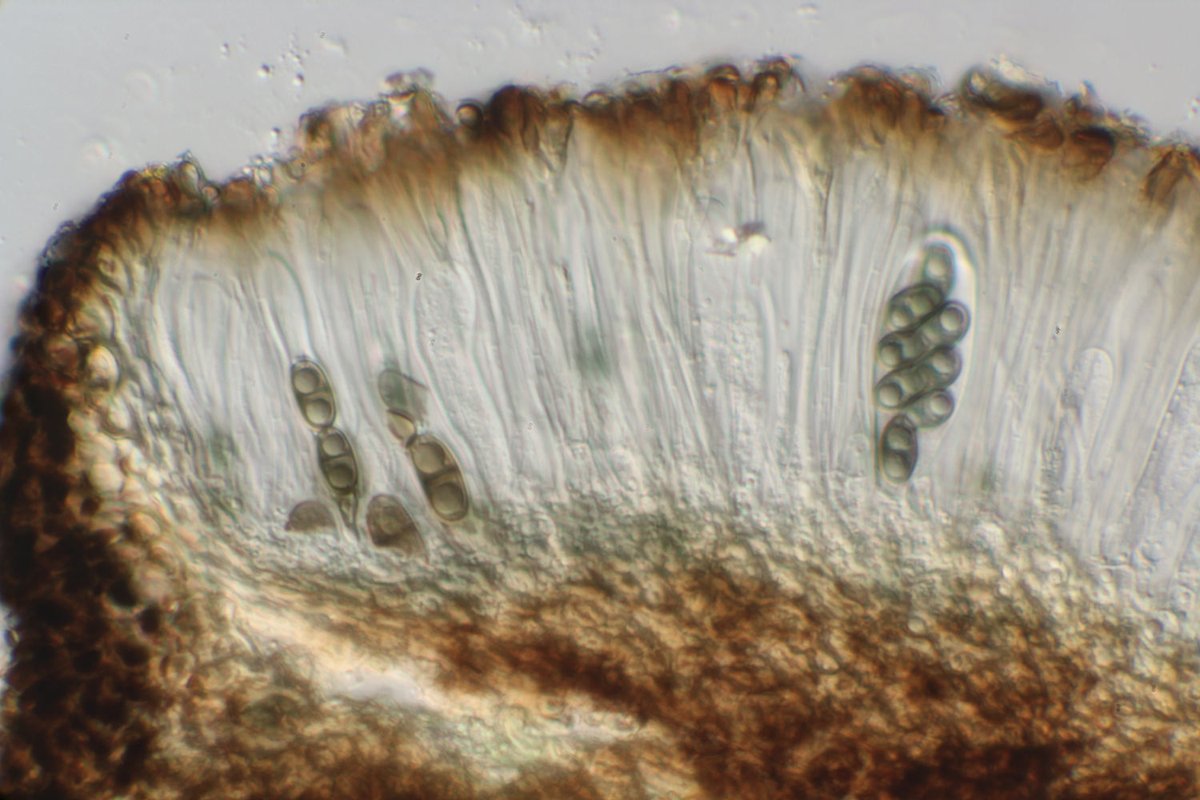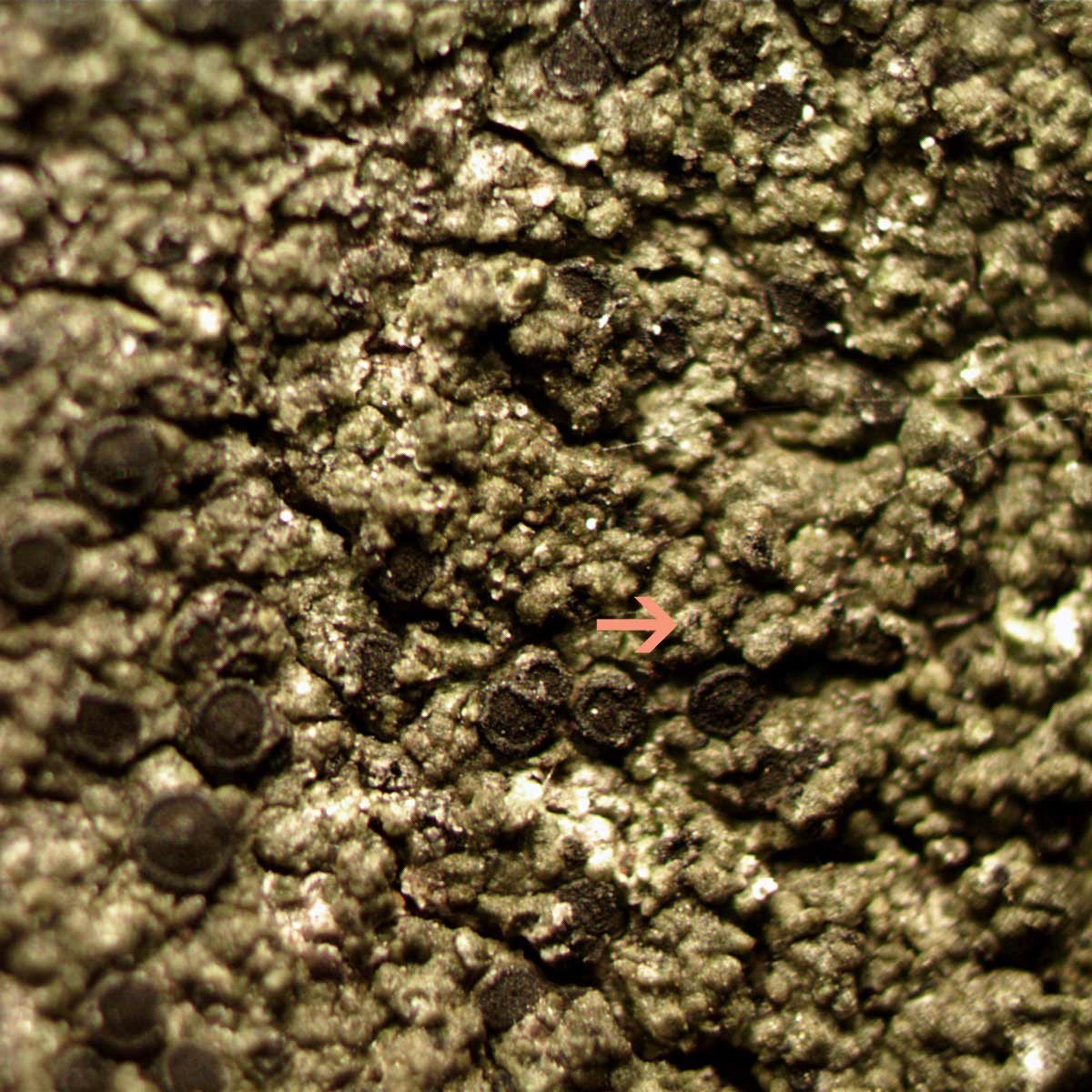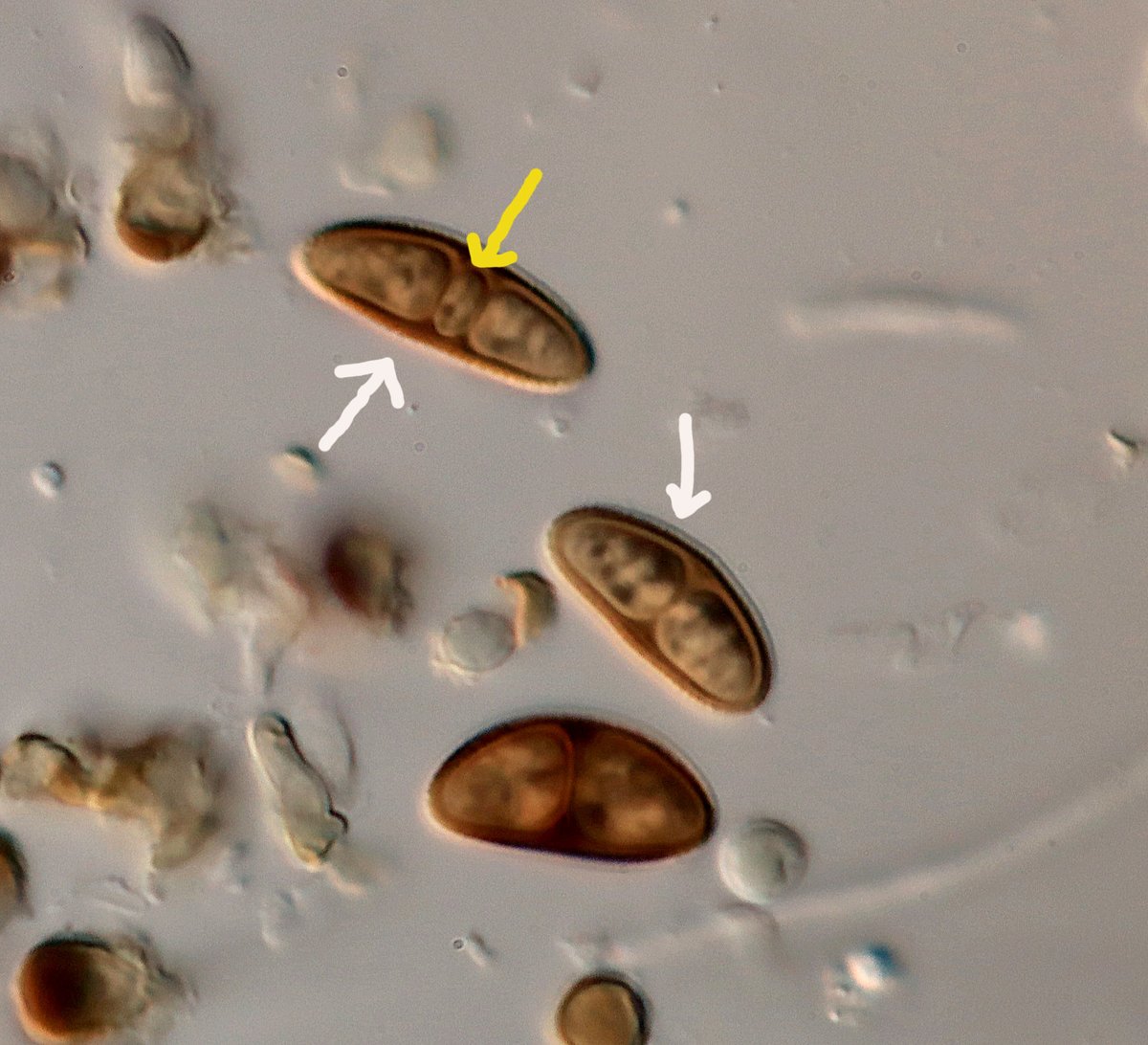These are the hyphae in a pycnidial wall. Is there anything familiar about them? It is a pycnidium from a common lichen but one that rarely produces conidia.
The pycnidium belongs to one of these two species (the conidia in both are filiform): https://twitter.com/obfuscans3/status/1219732099537756165">https://twitter.com/obfuscans...
Here is an apothecial section of Amandinea punctata. The paraphyses and exciple have brown, swollen apices. These are similar to the hyphae in the pycnidium at the start of this thread.
When I first collected a pycnidiate specimen of Amandinea punctata (no fruits present), it remained one of my mysteries for many months. Eventually I realised that the relationship between apothecial and pycnidial hyphae can provide clues.
This thread is prompted by an email enquiry. Have I ever seen the conidia of Amand. punct? Yes, but rarely. They tend to be in specimens where the thallus is well-developed. The pycnidia are immersed in the thallus so very inconspicuous.

 Read on Twitter
Read on Twitter